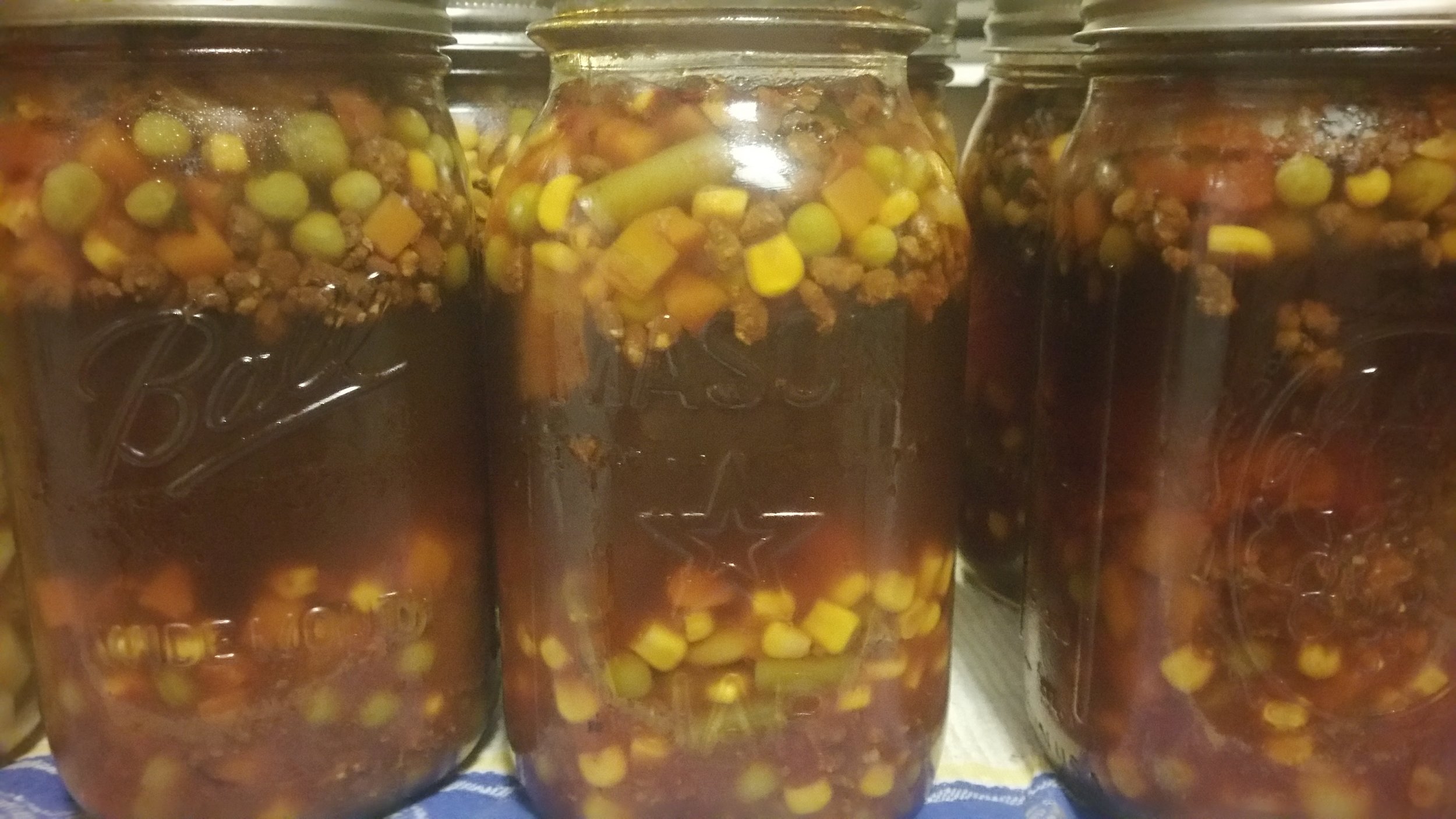How to Can Beans

Canning beans is a great winter chore or beginning canner project.
If you're new to canning, definitely start with beans. It's pretty difficult to screw them up, and they are cheap and easy to find. In the chill of the winter months is when I prefer to do all my bean canning. I can up jars upon jars of beans and broth during the colder months, as it heats the house up nicely.
The WHY
Folks often comment that there's no point to canning beans. Dry beans, they say, last such a long time in storage. Why bother to can them? The most compelling reason is convenience: jars of beans on the shelf mean I can open and serve them in 20 minutes, no soaking or pre-planning involved. From a preparedness standpoint, canned beans can be eaten straight from the jar with no requirement of water or a heat source to cook them. From a frugality standpoint: dried beans are a cheap source of protein, but tinned beans available at the store are much more expensive for the same product. It really clicked for me when I went to buy two cans of baked beans from the grocery store - I paid $2 per can! Forget this, I can make baked beans at home!
The HOW
I prefer to can my beans plain. You can can them with salt, flavoring, or baked beans as well. I will offer my baked beans recipe on this blog at some point. Plain beans are nice because they are versatile - I can add them to chili, soups, casseroles, rice dishes, etc.
Pre-Soak Method I prefer to soak my beans over night the day before I plan to can them. I soak 4 pounds of beans at a time, this usually equates to a canner full of beans for me. Put your beans in a large pot and cover them with a few inches of cold water. Let them sit in the water over night and they will absorb water. At this time you can pick out any beans that float or other debris you see. After soaking, drain and rinse your beans. Fill your jars with the damp beans until they are about 1-1/4" from the top of the jar. Fill the jar with water to take up any extra space and attach your lids and rings. Process in your pressure canner for 75 minutes if you used pint jars or smaller, or for 90 minutes if you used quart jars. Use the appropriate pressure for your altitude. (That's 10 pounds of pressure for me.)
No Soak Method If you totally forgot to soak your beans or just don't want to, you can can beans without soaking. In a pint jar, put a half a cup of beans. Use a tablespoon measure to fish out two tablespoons of dried beans. In a quart jar, put in a whole cup of dried beans. Use a tablespoon measure to fish out 3 tablespoons of dried beans. If you leave a whole cup in there the beans-to-water ratio will be wrong, and you'll end up with a bean brick. You may need to experiment with exactly how many beans you should put in a jar to suit your tastes using this method. Now fill the jar with water, pick out any beans or debris that floats, and put on your lids and rings. Process in your pressure canner for 75 minutes if you used pint jars or smaller, or for 90 minutes if you used quart jars. Use the appropriate pressure for your altitude. (That's 10 pounds of pressure for me.)
With either method you can add salt - 1/2 teaspoon for pint jars and 1 teaspoon for quart jars - or other flavorings like chicken broth, pork bullion, etc. Check out my Hearty White Chicken Chili recipe for a great use of home-canned beans!




